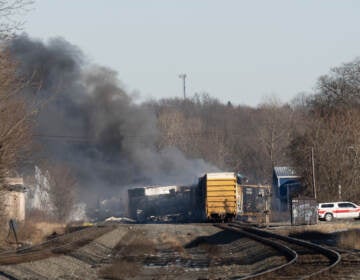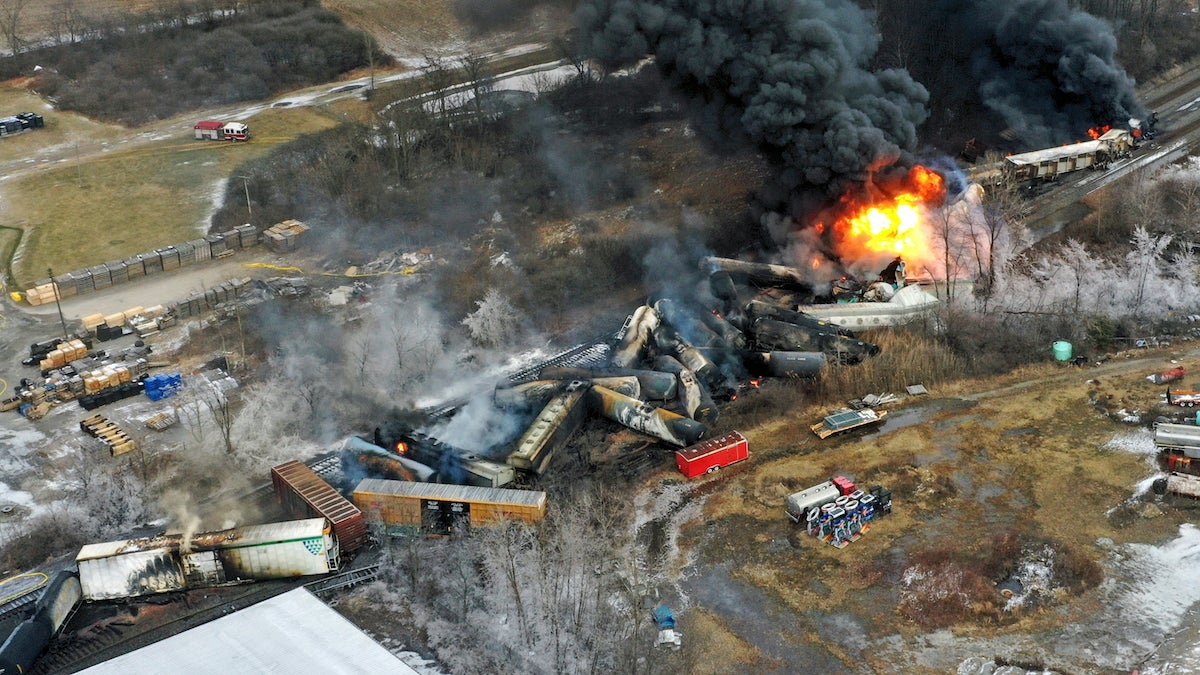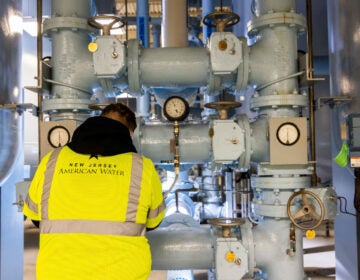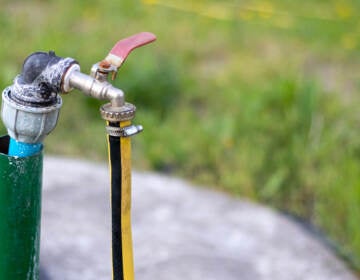A decade after Paulsboro, N.J. train derailment, questions linger over rail safety and public health
Residents in East Palestine, Ohio worry about the health impacts of vinyl chloride exposure. A similar accident occurred about 10 years ago in Paulsboro, N.J.
Listen 5:28
A train derailed in Paulsboro, N.J., at the Jefferson Street Bridge on Nov. 30, 2012. (Photo courtesy of Paulsboro Fire/Rescue)
Trisha Dello Iacono was preparing to host a children’s playdate on Nov. 30, 2012, when she received a phone call from her mother, telling her to tune in to the news.
A train carrying a colorless flammable gas called vinyl chloride derailed less than four miles from her home, in Paulsboro, N.J. After researching the carcinogen, Dello Iacono placed towels around her windows and doors.
But it wasn’t long before she felt a sugary burn in her mouth.
“I remember it so vividly. It tastes sweet, but it tastes like a chemical sweetness that you know something is not right,” Dello Iacono said. “And then I started feeling like a tight band was around my head.”
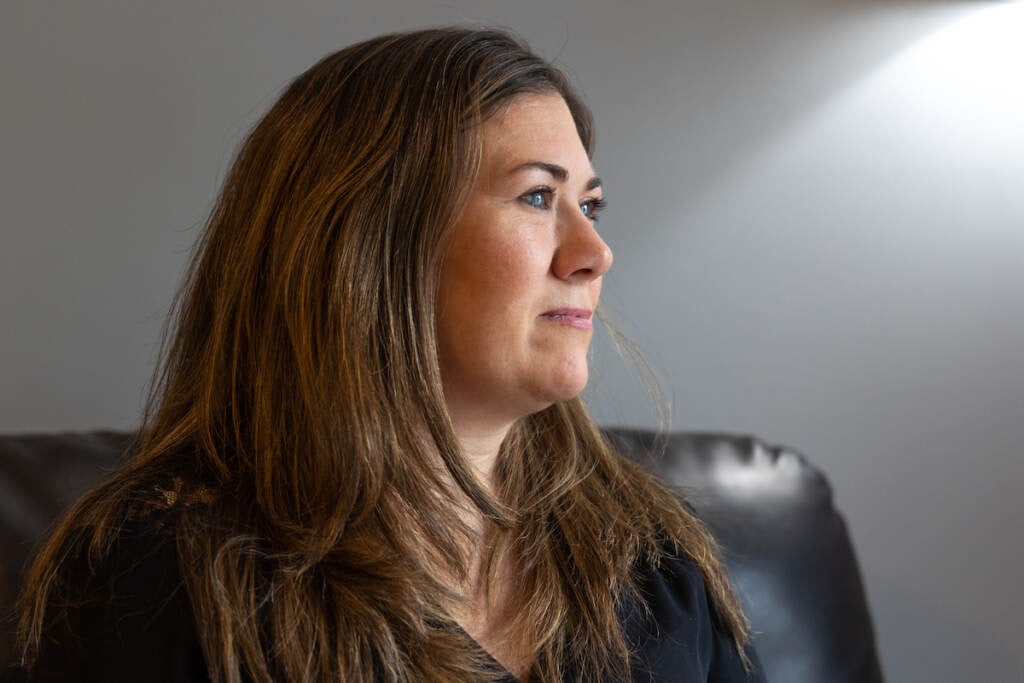
An hour or so earlier, Glenn Roemmich, the captain of the volunteer fire department, was sleeping in on his day off. He woke up to an urgent dispatch about a train that had partially fallen off a bridge.
Roemmich, now retired, remembers the sight of railcars in the creek and a collapsed bridge. At the time, he and his fellow first responders thought it was a foggy morning. But in reality, they were wading through a toxic gas that evaporates quickly.
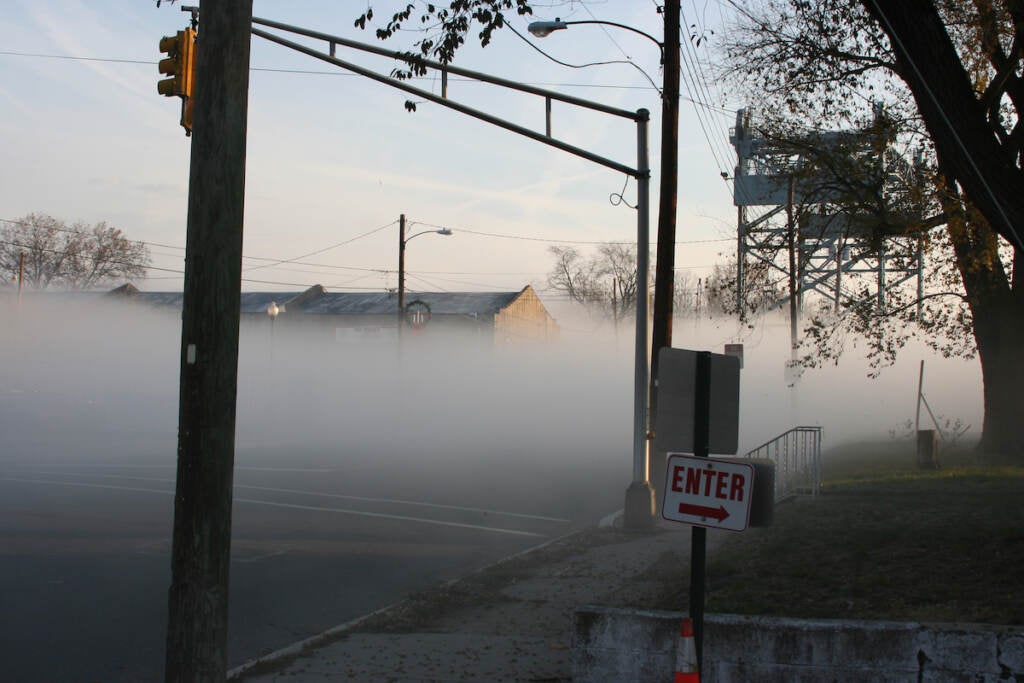
“Living in Paulsboro all my life, we know that there’s the train that goes through, and it needs to go through,” Roemmich said. “But you don’t think [a derailment is] going to happen here. And that morning it did.”
At 7 a.m., a Conrail train began to cross the century-old Jefferson Street railroad bridge. The bridge was not in its fully locked position, causing the train to derail and sending four cars filled with vinyl chloride into the Mantua Creek. One of the cars punctured, and released 24,000 gallons of the gas into the air.
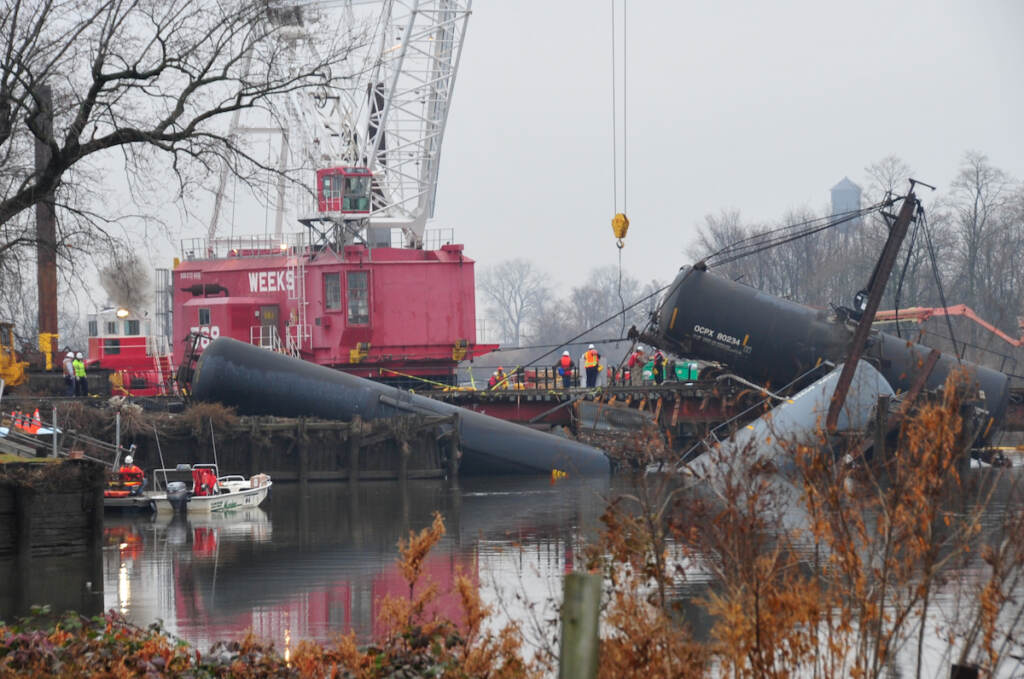
The accident led to the evacuation of hundreds of residents, and dozens of people seeking medical attention. Conrail offered cash settlements after hundreds of residents filed lawsuits against the company.
More than 10 years later, some residents still worry about long-term health impacts — and question whether enough has been done to prevent more accidents from occurring.
These questions were heightened recently, after a Norfolk Southern freight train carrying the same product derailed in East Palestine, Ohio, in February. The railcars caught fire and burned for more than two days, before emergency crews conducted a controlled burn.
“Watching a train go by a railroad as you’re sitting in your car is triggering,” said Dello Iacono, whose family is dealing with health problems she believes are related to the Paulsboro accident.
“It is really hard that my community’s experience wasn’t enough to force action to fix these problems.”
Residents still feeling health impacts
Dello Iacono lived fewer than four miles away from the accident site, in Woodbury. Residents in her town were not evacuated — something she said angers her to this day.
Despite not living in the evacuation zone, Dello Iacono said she and her son Logan, who was 5 years old at the time, dealt with symptoms like headache, sore throat, and nausea. Those symptoms lasted a few weeks.
Her son Liam, who was 2 years old at the time, didn’t show any symptoms until he started getting nosebleeds six months after the train derailment. It wasn’t until he started kindergarten that his teacher noticed the boy had short-term memory loss. Liam, now 12, is still facing health problems, Dello Iacono said.
“Fast forward to 2020, and he was diagnosed with Type 1 diabetes,” she said as she fought back tears in her living room a few weeks after the Ohio train derailment. “And the first thing the doctor said to me was, ‘Tell me his chemical exposures.’”
Dello Iacono also worries about the potential for serious health problems to arise in the future.
“The fear doesn’t go away,” she said.

Short-term exposure to vinyl chloride, which is used to make products such as PVC pipes, vehicle upholstery, and plastic kitchenware, can cause dizziness and headaches. Exposure to high levels of the gas can cause unconsciousness and death. Studies have shown that workers who are highly exposed to vinyl chloride over time have an increased risk of liver cancer, as well as nerve damage and altered immunity. However, the lowest levels that produce those health conditions are not known.
Shortly after the derailment, New Jersey’s health department, the Centers for Disease Control and Prevention, and Rutgers University conducted initial health evaluations for residents and first responders. The health department determined the chemical leak caused reversible, short-term but harmful health effects — like eye and nasal irritation or headache.
However, no state or federal agency has evaluated the long-term health impacts of those exposed, despite recommendations to do so.
“That’s a disgrace on multiple fronts,” said Paulsboro Mayor Gary Stevenson.
The train derailed just several feet from his house. At the time, he was the deputy fire chief, and had just gotten in bed at 7 a.m. after a night shift. Stevenson remembers running downstairs after he heard his wife yelling.
“I just saw nothing but trains all over all of my property, in the water, leaning over the bridge, getting ready to fall into the water,” he said.
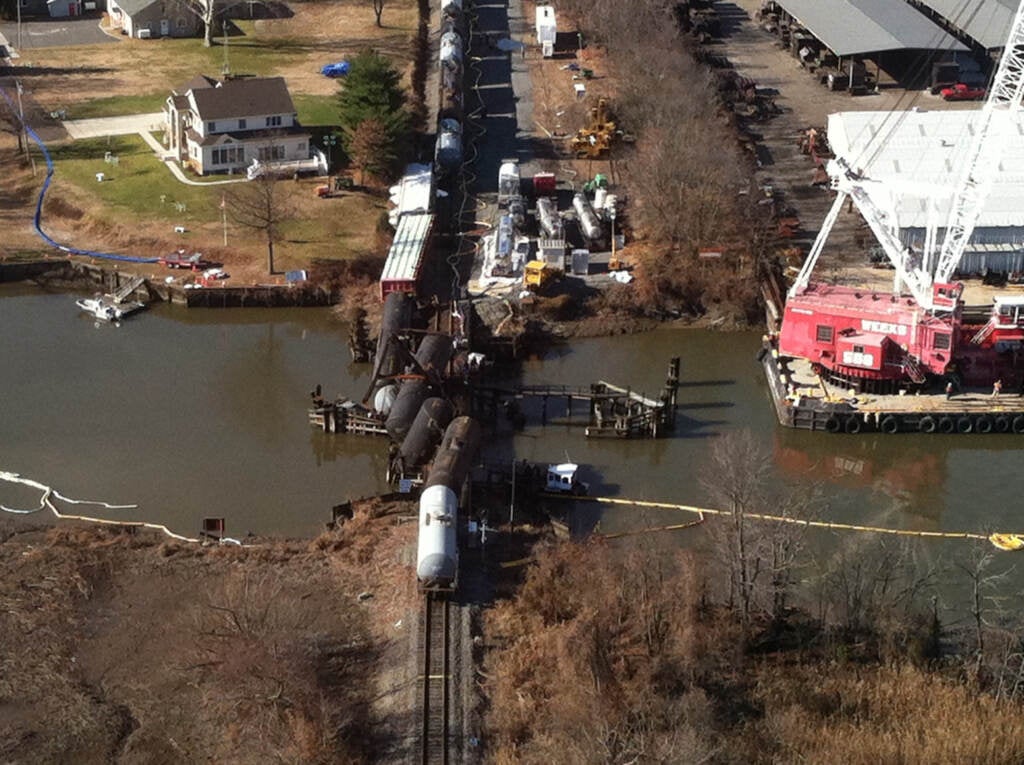
Stevenson said a blood test taken shortly after the accident showed high levels of vinyl chloride. He was advised to get regular medical checkups, but currently doesn’t have any related health problems.
The New Jersey Department of Health and the CDC did not respond to questions about why there have been no follow-ups.
A state air quality report released in 2014 determined there was “insufficient toxicological and epidemiologic knowledge” to assess whether there was a risk of long-term health impacts.
Making rails safer
The National Transportation Safety Board found Conrail had been warned 23 times about the faulty railroad bridge in the year prior to the accident, but failed to address the dangers. And it wasn’t the first time an accident occurred — in 2009, the swing bridge buckled, derailing 16 cars carrying coal. The NTSB said Conrail failed to hire qualified employees to inspect the bridge, and failed to address the bridge’s hazards.
Mistakes were made by state officials too, the NTSB reported. Shortly after the accident, the New Jersey Department of Environmental Protection inaccurately told residents the chemicals had dissipated.
The volunteer firefighters also weren’t adequately trained to respond to such hazards — which was evident when they didn’t wear the appropriate protective gear. In addition, the state’s emergency response plan was insufficient, and residents were not evacuated soon enough, according to the NTSB report.
Former fire captain Glenn Roemmich, who said he doesn’t have any health problems related to chemical exposure, remembers being questioned by the agency.
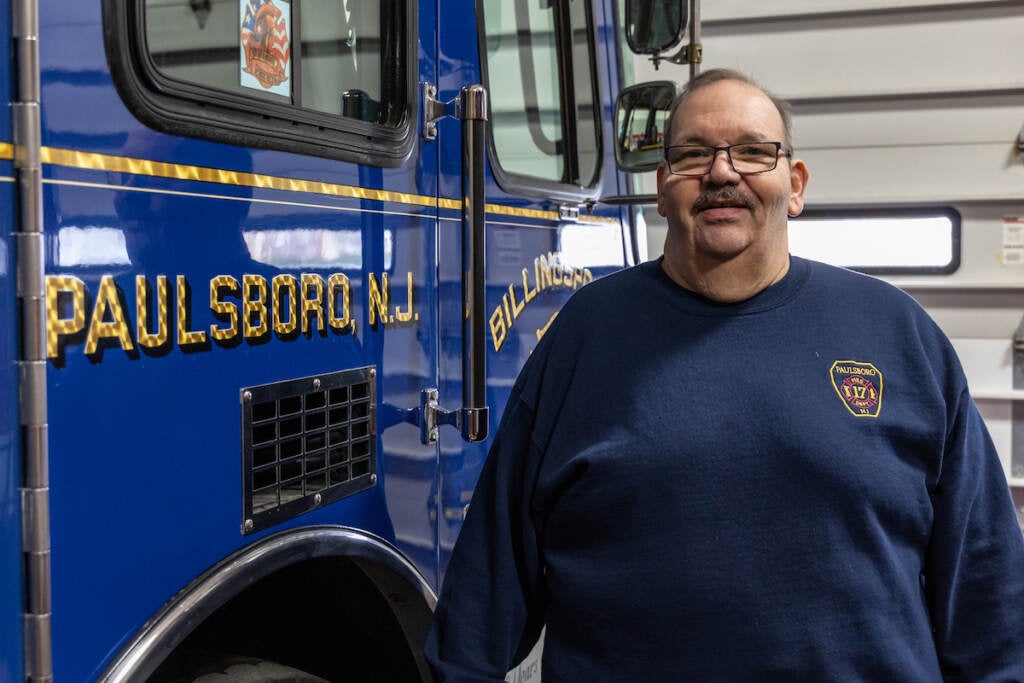
“At that time, I believe the commissioners believed that we were a paid fire department,” he said. “I said, ‘We’re volunteers. I have to do a normal 9-to-5 job to provide for my family and myself. And there’s not a whole lot of time to go to training and stuff like that.’”
The NTSB made several recommendations to improve emergency response, and to ensure safer bridges and rails.
The bridge was replaced in 2015, there has been increased first responder training and rail compliance is being audited. The state used federal funding to study hazardous materials on site and in transit to help develop response plans and mitigation strategies in the event of a hazardous substance release.

But at least six of the recommendations to state and federal agencies and organizations have not yet been fully implemented — something that’s typically achieved within five years.
The NTSB recommended that railroad companies transporting hazardous materials be required by the Department of Transportation to help develop emergency operations and response plans in conjunction with the communities they travel through. However, the U.S. Department of Transportation and its Pipeline and Hazardous Materials Safety Administration have failed to follow through, according to the NTSB.
Mayor Stevenson still worries about the potential for another accident — trains carrying hazardous materials pass through his town frequently. He’s particularly concerned about the transportation of liquified petroleum gas, a flammable mixture of hydrocarbon gasses.
“Here I am mayor now — I never get anything from the railroad or the NTSB,” Stevenson said. “Another accident is going to happen because nothing was followed up on.”
In a statement to WHYY, Conrail said it “deeply regrets” the 2012 accident, and the impact it had on the community.
“Preventing another Paulsboro is paramount and permeates our safety rules and operating practices, our maintenance regimens and the allocation of our capital dollars, and it also continues to drive our focus on community relations,” the statement reads. “We are committed to the safe operation of our railroad for our neighboring communities, our employees, and our customers, and we will continue to do everything in our power to prevent another incident from occurring.”
Conrail said it invests about $24.8 million a year on track and bridge infrastructure. The company said it also has on-the-ground relationships with first responders, educating them about hazardous materials.
Dello Iacono said she wants Congress to pass legislation that forces rail companies to ensure their rails are safe. In 2015, U.S. Sen. Bob Menendez introduced legislation to impose stronger penalties on railroads that violate safety standards. However, the bill went nowhere.
In response to the train derailment in East Palestine, lawmakers introduced legislation that would broaden the definition of a “high-hazard flammable train,” subject to stricter federal safety regulations. A second bill introduced last week aims to direct the Federal Railroad Administration to study wheel-related failures and derailments, enact new safety measures, and require large freight railroad companies to join a confidential “close call” reporting system.
Dello Iacono is now a mother of four. She traveled to D.C. to attend a hearing about rail safety shortly after the East Palestine derailment — and said she feels for the town’s mothers.
“Knowing what I know now a decade later, we’re still dealing with health issues from our exposures, and to just think that that’s what their future entails,” she said. “It’s just really hard and my heart breaks for them.”
WHYY is your source for fact-based, in-depth journalism and information. As a nonprofit organization, we rely on financial support from readers like you. Please give today.



